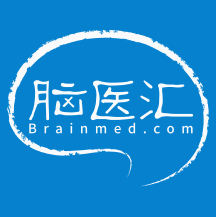
排版 | AiBrain 编辑团队

Iain C. Bruce教授祖籍英国,现任Neuroscience Bulletin(NB)执行副主编(2011年8月至今),北京大学分子医学研究所客座教授,曾任浙江大学医学院教授、江南大学访问教授、香港大学副教授。从事生命科学英文论文写作教学30余年,在香港大学、台湾成功大学、浙江大学和北京大学开设生物学专业英文论文写作课程,并著有《生命科学论文写作指南》一书,广受好评。2006年以来,他为北京大学和浙江大学科研人员修改润色生命科学论文数百篇;为NB修改润色论文1400余篇,为保障NB文章的发表质量,做出了突出贡献。
2023年,时值Iain C. Bruce教授担任NB执行副主编12周年,NB编辑部特邀请他整理出他多年的工作心得,以“NB卓越论文写作技能提升”栏目在NB微信订阅号“神经小灵通”系列发表。其内容为生命科学英文论文撰写中的常见错误纠正等,专门针对中国生命科学界的青年学者和研究生。
希望此栏目能对大家的英文论文写作技能提升有所助益,敬请大家持续关注。
目
录
往期:
本期:
NB卓越论文写作技能提升-3︱不要小看这一撇(')
NB卓越论文写作技能提升-4︱千万不要“反向翻译”
精彩继续:
NB卓越论文写作技能提升-5︱描述结果时避免使用CAN/COULD
NB卓越论文写作技能提升-6︱common不等于popular
NB卓越论文写作技能提升-7︱detect还是measure?
NB卓越论文写作技能提升-8︱这些名词请使用单数!

Iain C. Bruce 课堂
APOSTROPHES(撇号)
In casual writing, we use apostrophes to indicate missing letters, as in that's for that is, hasn't for has not, and doesn't for does not. This is considered too informal for published papers and shouldn't should not be used.
The apostrophe is also used to indicate possession, as in the professor’s office or the student’s desk. Generally, the use of the apostrophe to indicate the possessive case should also be avoided. This strategy also solves the problem of whether to put the apostrophe before the s, as in the patient’s symptoms [one patient], or after it, as in the patients' symptoms [many patients]. It is better to say the symptoms of the patient or patients.
Exceptions include according to the manufacturer's instructions, a phrase that came into common use with the development of reagent kits, and items named after their inventors, such as Dulbecco's modified Eagle's medium.
✦+
+
知识点总结
1、如果撇号的用途是为了缩写,请不要在论文中使用;
2、如果撇号是为了表达从属关系,也请避免在论文中使用。更好的表达方式是用of来代替,比如the symptoms of the patient;
3、已经广泛使用撇号的固定搭配除外:
(1)厂家的说明the manufacturer's instructions;
(2)试剂盒的改进过程中广泛使用的短语;
(3)以发明者名字命名的物品。

Iain C. Bruce 课堂
BACK-TRANSLATION(反向翻译/还原翻译)
The examples below are the results of back-translation.
The English names for many biomedical terms have been given equivalents in Chinese. Such terms are usually translated as appropriate combinations of existing characters. The problem arises when an author writes a paper in Chinese and then asks someone, perhaps an English major, to translate it into English. The translator is unlikely to recognize the special meaning of characters representing medical terms and so translates them literally. For example, the three Chinese characters for immunohistochemistry are derived from the three components – immunology, histology, and chemistry. The author/translator then re-translated the characters back into English using a Chinese-English dictionary and came up with immunity organization chemistry.
You can avoid this problem by checking that the terms you use are common in recent international publications in your field.
EXAMPLE:
“Chose the method of immunity organization chemistry to dye the cell according to the elucidation of the kit”
Immunohistochemistry was used to stain the cells, according to the instructions with the kit.
[Note that the author appears to have used a Chinese-English dictionary for all three underlined terms.]
“Rabbit resist people antibody”
Rabbit anti-human antibody
“Manufacture of cells creeping plate”
Manufacture of cell migration plates
“Twin-coccus is a genus of bacteria found in…”
Diplococcus is a genus of bacteria found in…
✦+
+
知识点总结
1、不要将英文来源的中文术语理所当然地进行反向翻译,而是应该查找准确的英文来源;
2、可以通过“术语在线 termonline"网站查找对应术语的准确表达;
网址:https://www.termonline.cn/index
3、检查自己翻译的英文术语是否准确常用,可以在自己研究领域内的专业英文期刊中进行查找、核对;
4、经常阅读本领域内的专业英文期刊,积累和更新术语表达。



声明:脑医汇旗下神外资讯、神介资讯、脑医咨询、AiBrain所发表内容之知识产权为脑医汇及主办方、原作者等相关权利人所有。未经许可,禁止进行转载、摘编、复制、裁切、录制等。经许可授权使用,亦须注明来源。欢迎转发、分享。




